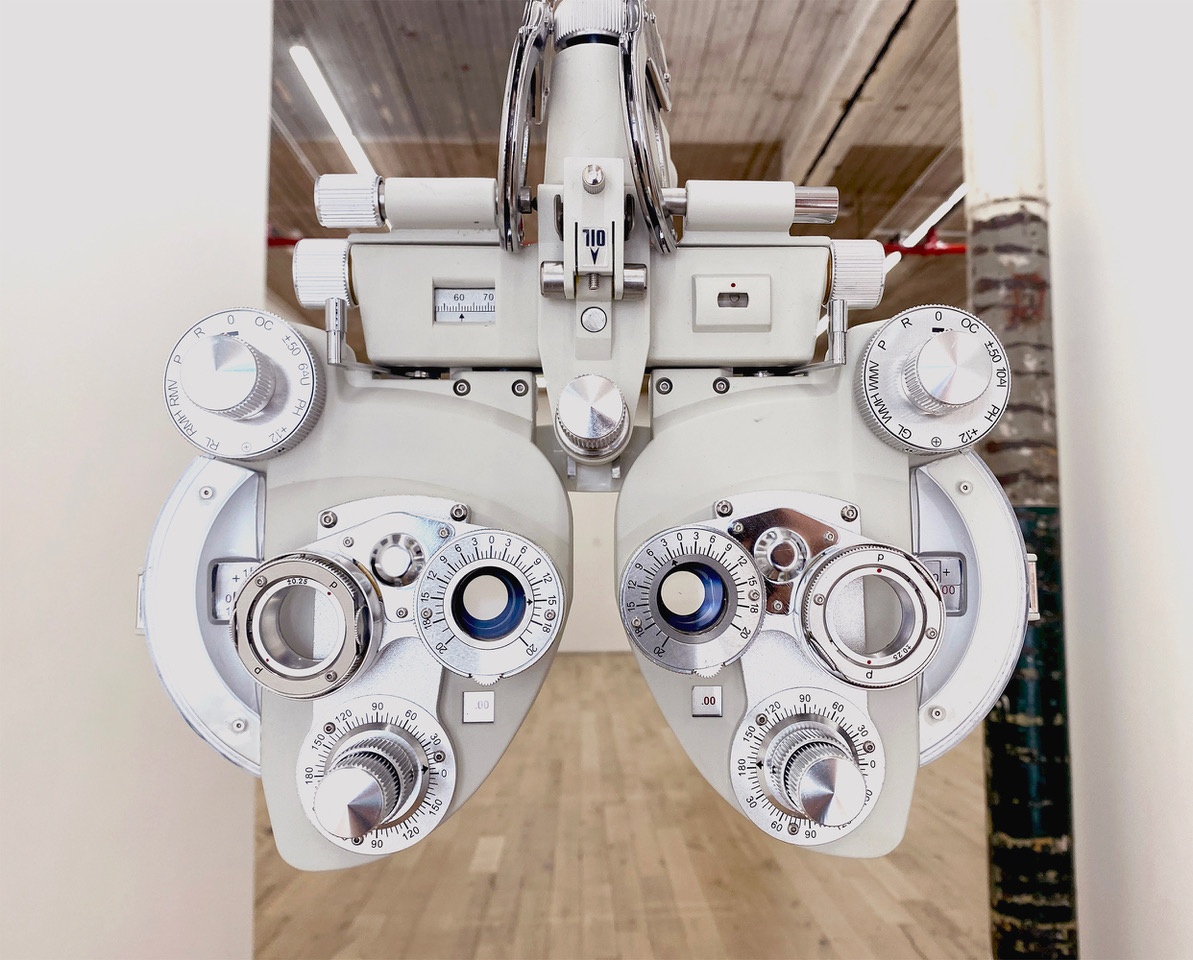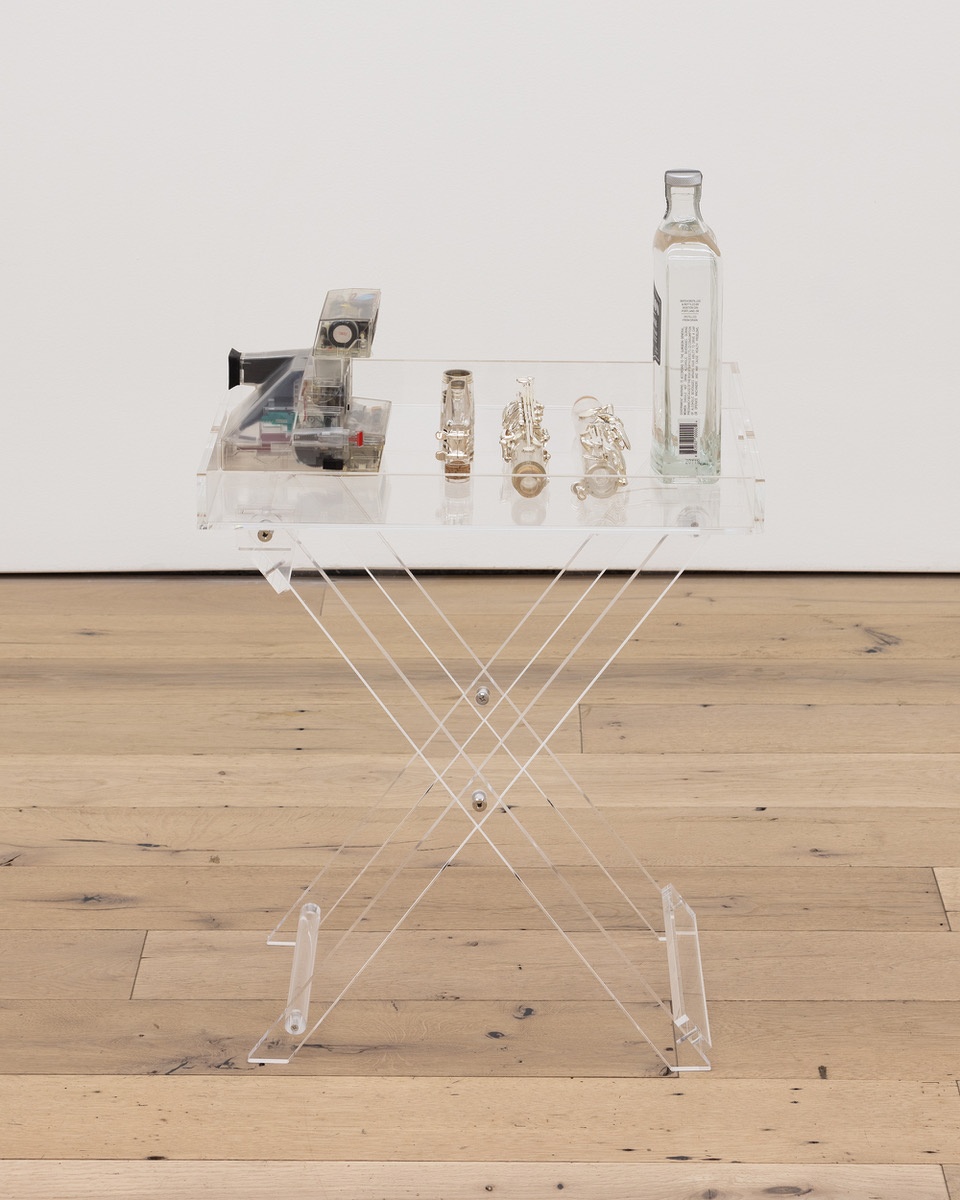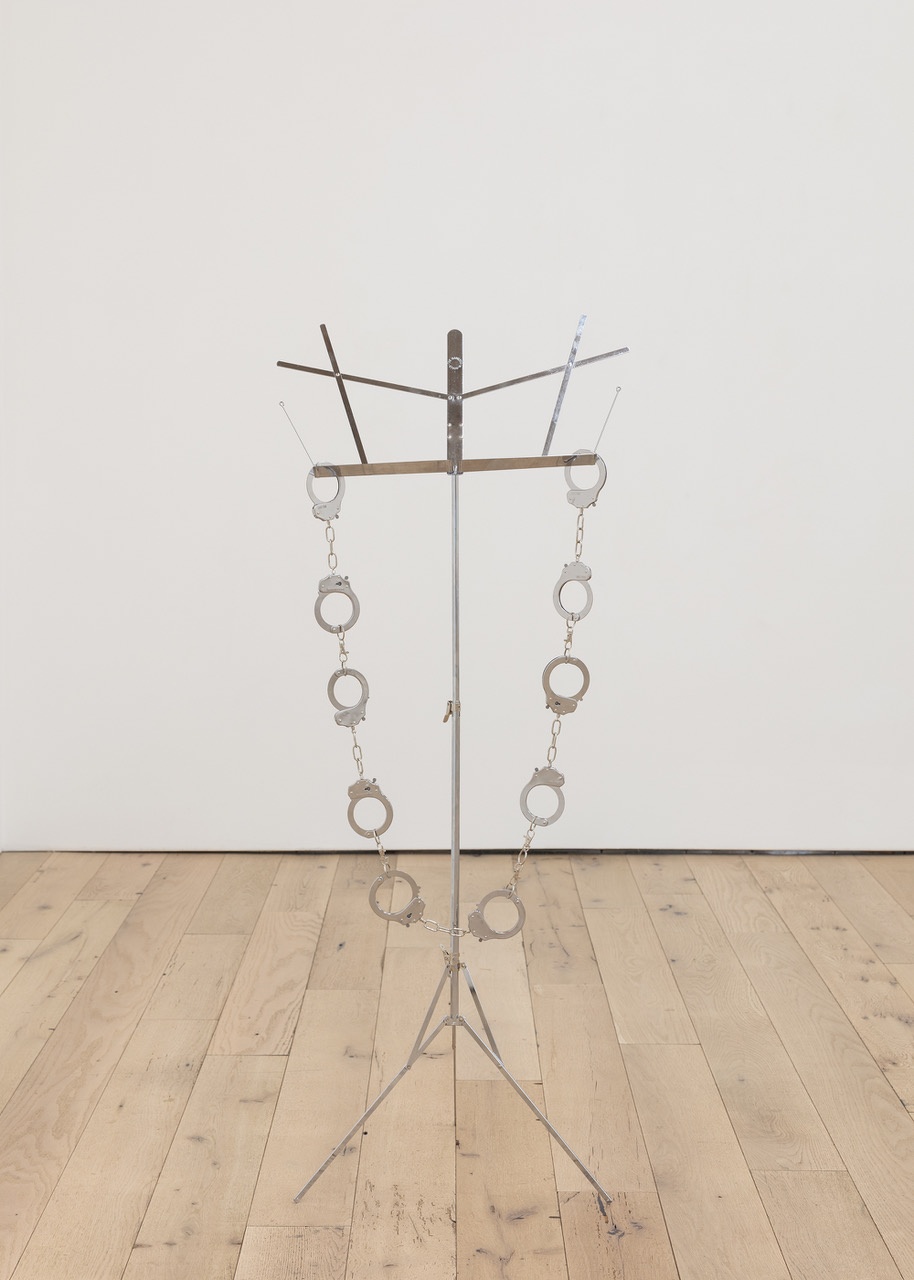NAUGHTY GLAM Peter Brock on Kayode Ojo at Martos Gallery, New York

Kayode Ojo, "5’11,” 2020
It is currently popular to use the term “optics” in describing the role of public perception in US politics. The technical connotations of this word speak to the sophistication with which appearances are calibrated. The scientific study of light and vision gives us the lenses that correct our vision and those that enable photography. The newer political meaning of optics concerns the process by which contextual factors shape the collective impression of people and events. In this sense, both dimensions of this term draw attention to the skillful distortions that influence our perception.
In his second solo exhibition at Martos Gallery, Kayode Ojo uses arcane optical equipment as a physical metaphor for unpacking the intricacies of visual attraction. The show consists of striking combinations of found objects that are almost exclusively made from translucent or reflective materials. One sculpture, for example, features small chrome airplane models atop a long pane of glass supported by champagne flutes above a large mirror. The gallery lights produce an abundance of dazzling highlights on these shiny surfaces. The sculptures look glamorous, instantly attractive. And yet something about their allure feels unnerving, as if they owe their seductive qualities to some implicit, unseen coercion.
An impressive optometry device that looks like a steampunk version of a carnival mask hangs at eye level in the entrance to the exhibition space. The apparatus, which is called a phoropter, is used to test each eye during an exam. Two round lobes flank a central pair of elongated lenses. An intimidating number of silver dials and knobs surround the openings where you place your eyes. Ojo’s work, tilted 5’11” (2020), floats elegantly in the air, suspended by thin steel cables. As I stood face-to-face with this retro-cyborg headpiece, I began to see it as a clunky stand-in for the web of perceptual distortions that makes up our personalities. Instead of measuring the state of our corneas, I imagined that this machine could quantify the extent to which ideology or personal history warps our understanding of current events. It took some time for me to notice the pair of handcuffs that connect this handsome phoropter to its wire support. This detail shifted my thoughts toward the behavior-distorting influence of our devices. A reliance on technologically mediated ways of seeing means constricting our vision to the properties of the interface. The optician’s tool in front of me began to function as a way of relating to the invisible forces that shape what I see online. The algorithms that dominate social media and online shopping don’t have physical knobs for us to adjust their parameters, but perhaps they should.

Kayode Ojo, "everybody knows i’m deaf i’m not going to try to hide it,“ 2020
Two nearby sculptures feature folding music stands, each with a peculiar strand of objects dangling from it like an oversized necklace. The limbs of the polished chrome stands are thin, but their taut angles convey an enthusiastic and confident posture. In why not tell the truth for once (2020), a chain of stainless steel handcuffs hangs from the small shelf intended to hold sheet music and nearly reaches the floor. Its companion, this is not how these hearings are going to be conducted (2020), includes a strand of ten Swiss Army knives with clear plastic grips. Various configurations of the sharp and pointy tools are splayed out from each of the knives. This absurd jewelry looks shockingly appropriate on its dainty host. Their visual similarities, shiny rivets and folded steel manage to overcome the vast differences in their conventional identities. Beneath the charm of these uncanny hybrids lurks a more sinister possibility. The strand of naughty objects complicates the confident body language of the music stand. The handcuffs are costume replicas and the small knives look fairly harmless, and yet they invoke a playful form of coercion. These mildly threatening objects speak to the allure of transgressing social norms.
This unsettling slippage between objects of amusement and menace continues with an unusual and thoroughly translucent still life. Everybody knows i’m deaf i’m not going to try hide it (2020) consists of a clear, disassembled clarinet, a polaroid camera, and a bottle of Aviator gin atop an acrylic folding table. The parts of the clarinet are neatly stacked in front of the gin while the camera, whose shell is clear plastic, faces this arrangement from the opposite end. The smaller sections of the clarinet resemble shot glasses with silver levers on their sides. The specificity of the arrangement evokes the purposeful layout of a surgeon’s tools beside the operating table. I found it impossible to resist imagining what type of procedure requires these implements. The mouthpiece of the clarinet and the mouth of the gin bottle are nearly the same diameter. Engaging with these phallic shapes involves your lips, and the presence of the camera escalates this erotic charge. In this context, it appears inevitable that the resulting Polaroids would be quite risqué, the kind that could be compromising in the wrong hands.

Kayode Ojo, "why not tell the truth for once,“ 2020
The most provocative work in the show also contains the strongest contrast between its constituent parts. Don’t you dare (2020) is a white, desk-shaped vanity with many drawers and a glass top. Three Desert Eagle pistols are plainly visible through the glass, one in each of the top drawers. Placed carefully for us to see, each handgun faces a different direction. These are replicas – very convincing ones. Given the epidemic of gun violence in the United States, it feels impolitic to say that these hefty pistols look sexy. But the fact is, they do. Their appeal comes from their handsome profile and brawny chrome barrel, as well as the unabashed way they are displayed. These weapons seem surprisingly at-home resting in this self-care station with crystal knobs on its drawers. You are not supposed to touch the sculptures in a gallery, and so this context sublimates the guns’ violent potential into an aestheticized aura of potency. The uncanny harmony between the guns and the vanity goes even deeper thanks to a stunning bit of branding. The name of this particular piece of furniture, as revealed in the materials list, is SlayStation 2.0. Ojo makes a point of including the specific product names and manufacturers of his ready-mades in his list of materials, and in this case it lends the work an element of absurdity. I pulled out my phone and found the SlayStation 2.0 for sale on the website of Impressions Vanity Company. The product description begins, “Get ready to slay all day.” Glamorizing violence is an established tradition in American popular culture. How the language of violence has permeated the sphere of self-actualization and beauty is less clear, and way more perverse.
Our material culture reveals much about the desires and images that motivate us. Objects speak to each other in ways that elude the rational bounds of language. This visual resonance generates considerable narrative potential, and Ojo allows us to glimpse just enough of his method to entice speculation. To his credit, the suggestive logic of these assemblages rarely constrains the dialogue between the parts. In choosing to compose ready-mades, he invites in meanings and associations that he cannot fully control. These symbols maintain most of their autonomy and potency, which makes for a delightfully puzzling viewing experience. When it comes to locating and leveraging these exquisite affinities among objects, Kayode Ojo is killing it.
“Kayode Ojo: The Aviator,” Martos Gallery, New York, September 15–November 7, 2020.
Peter Brock is an artist based in Brooklyn.
Image credit: Martos Gallery / Kayode Ojo, photos: Charles Benton
